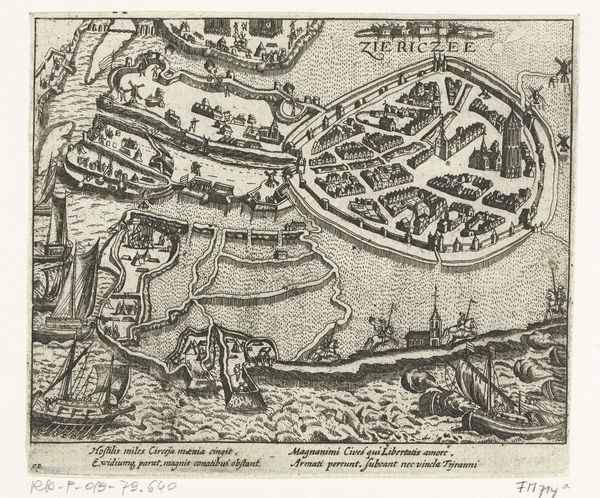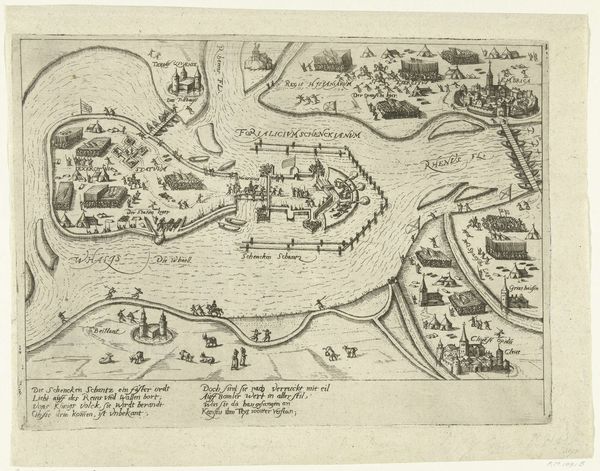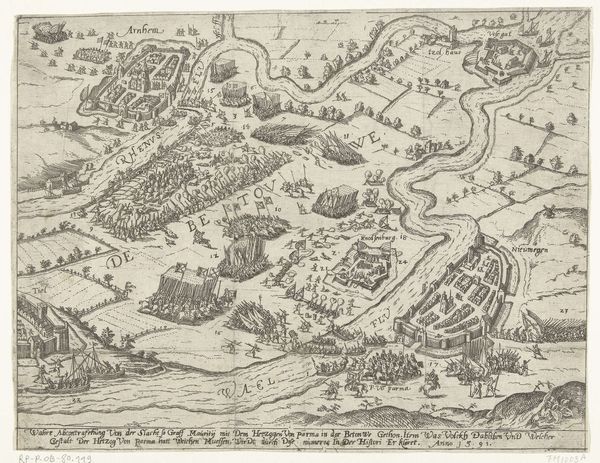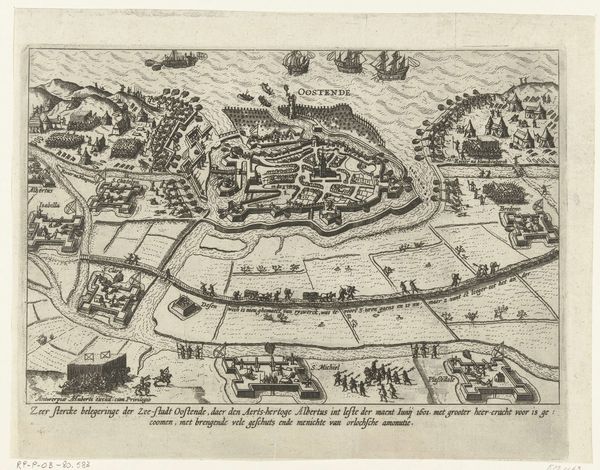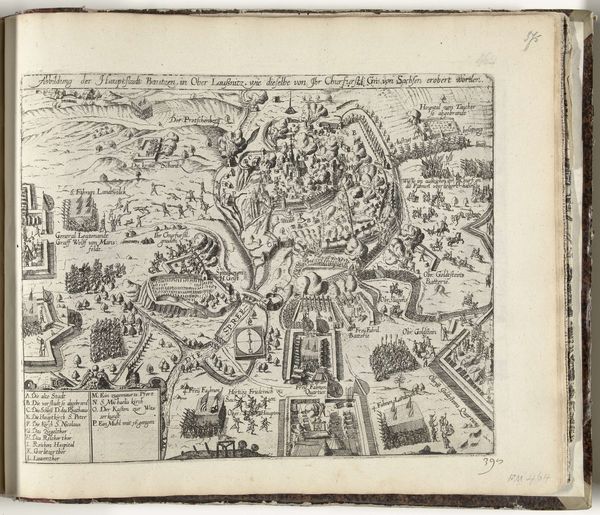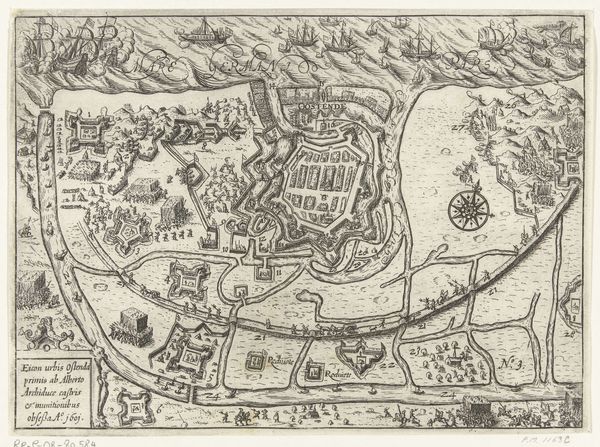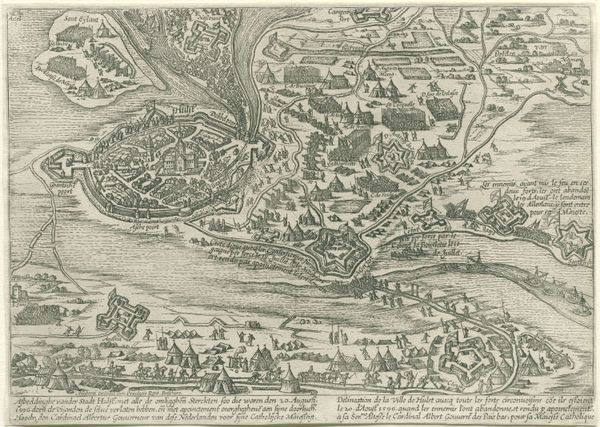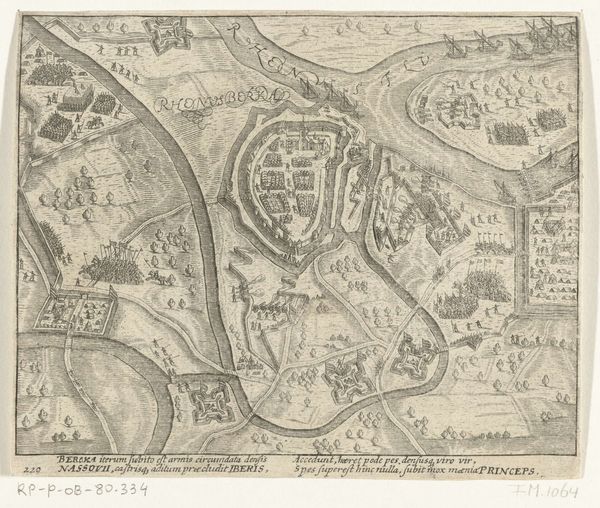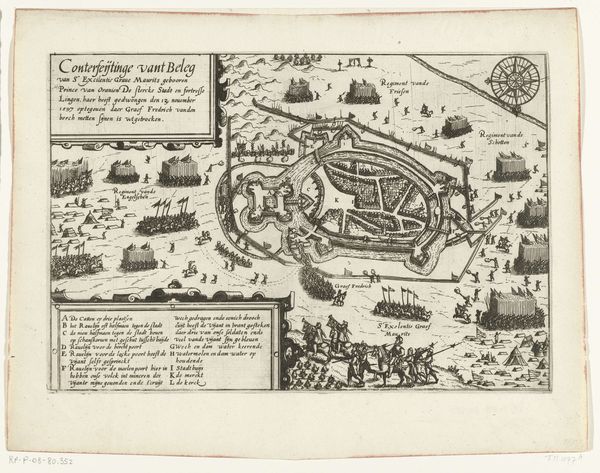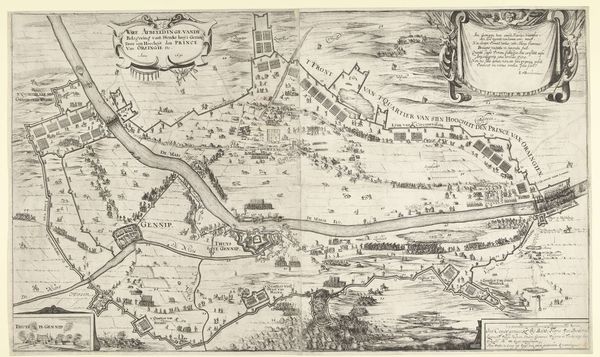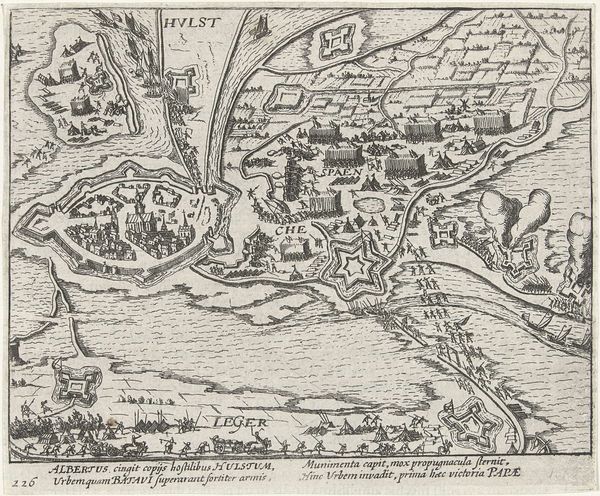
print, engraving
#
dutch-golden-age
# print
#
old engraving style
#
cityscape
#
history-painting
#
engraving
Dimensions: height 234 mm, width 273 mm
Copyright: Rijks Museum: Open Domain
Curator: We're now looking at a print titled "Beleg van Schenkenschans door de Spanjaarden, 1597," created in 1599 by an anonymous artist. Editor: It’s busy, isn’t it? Quite chaotic actually, but in a very meticulously rendered way. All these tiny figures moving across the landscape—it's overwhelming at first glance. Curator: Indeed. It's an engraving depicting the siege of Schenkenschans, now a part of Germany near the Dutch border. As a history painting, the work shows Prince Maurice’s forces reclaiming Schenkenschans. The anonymous engraver would have relied on accounts of the event to create it, considering that these prints are critical documents chronicling military events of the period. Editor: I find it fascinating how the map-like perspective gives it this sense of detached objectivity. It’s as if we're surveying the entire battlefield from a god-like viewpoint. Yet, there's still a clear narrative being constructed through the placement of figures and the detail given to the fortifications. Look at how strategic points in the town were indicated—almost diagrammatic. Curator: Precisely. That bird's-eye perspective, which combines mapping with history painting, emphasizes strategic power, making visible control over terrain and populations. We have this tension between geographical precision and allegorical significance, especially considering how the print aims to demonstrate Dutch power through clear legible information, underscoring a specific political perspective regarding Dutch independence from the Spanish. Editor: And that tension is very powerful formally! You almost get the feeling that the overall formal quality takes second fiddle to that impulse, or even sacrifices a complete visual harmony for clarity of the scene. Curator: Well observed, that balance of representation and artistry also reveals what these visual materials meant to those viewing them, not simply to modern interpreters like you or me. I always see visual prints and publications like this one at the Rijksmuseum, it makes you understand that the images are designed to convey distinct meanings that affect collective identities of all kinds. Editor: Looking closer, I see so much attention paid to scale, giving it a hyperrealistic mood. I think this helps create a sense of historical reality for the events of the siege of Schenkenschans. Curator: A sharp insight, indeed! As an object, this detailed and skillfully made print highlights how art participates in a complex interplay of communication and documentation—an intriguing perspective that invites contemplation on the socio-political conditions of image making at that moment. Editor: Right. Analyzing prints such as these really makes us rethink our preconceived assumptions about history!
Comments
No comments
Be the first to comment and join the conversation on the ultimate creative platform.
